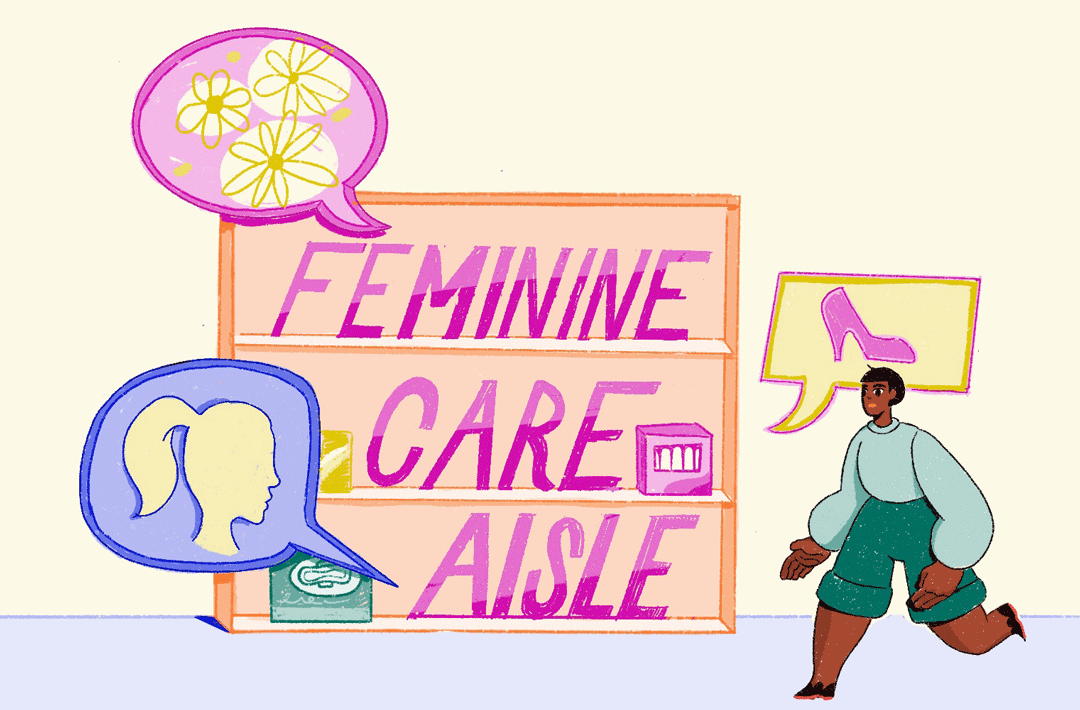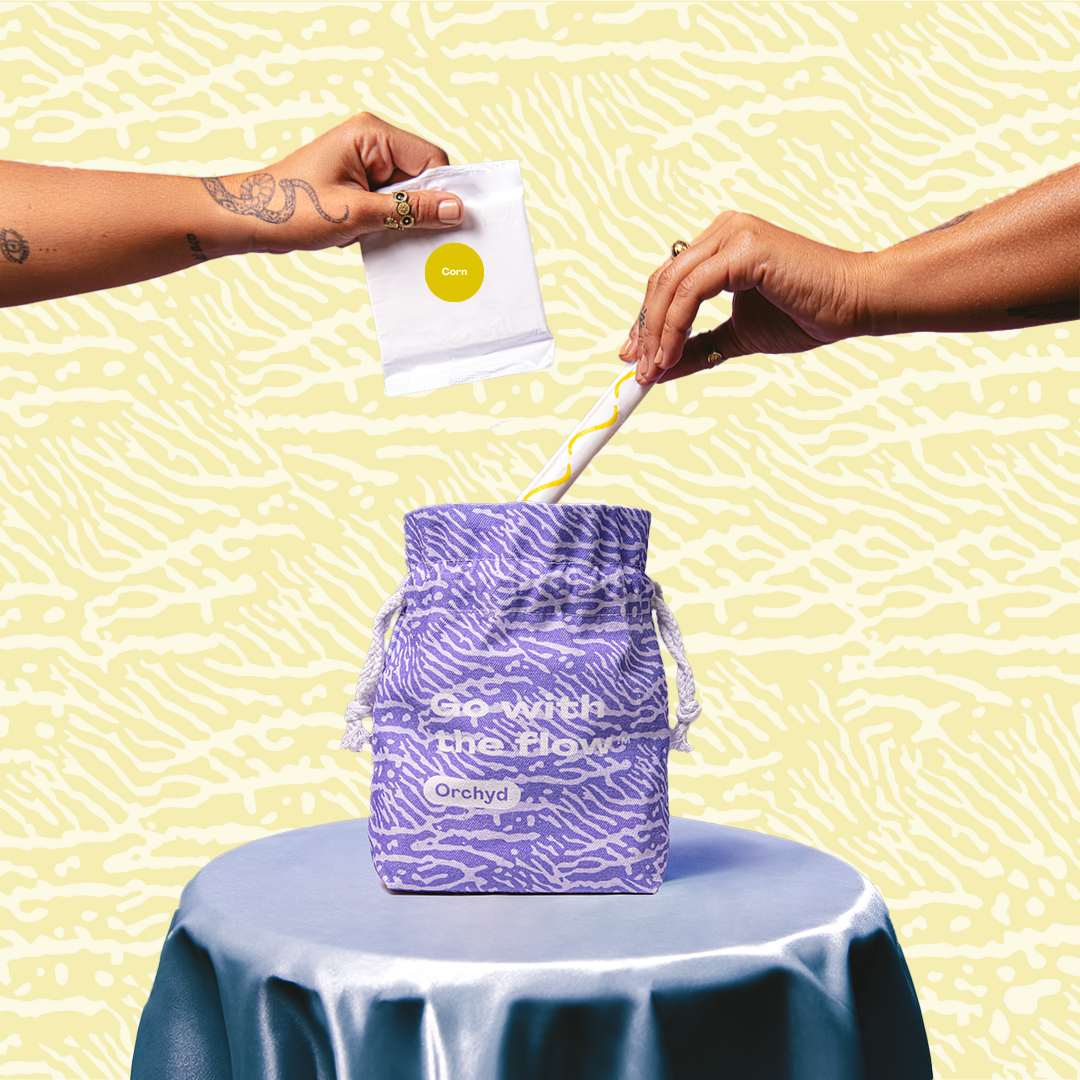
Renaming The Feminine Care Aisle
Share
 There is a common theme in media and marketing efforts when it comes to talking about menstruation. Period products typically come with bright colors, flowery imagery, and the idea of “femininity.”
There is a common theme in media and marketing efforts when it comes to talking about menstruation. Period products typically come with bright colors, flowery imagery, and the idea of “femininity.”
In most stores across the U.S., when you find your period products, you’ll likely have to go to the “feminine care aisle.” Even if you aren’t female, you can typically identify it as where you’ll find pads, tampons, and anything else you might need to survive that time of the month. Even though we all know that this is the aisle to head to, that doesn’t mean we necessarily feel comfortable with the term “feminine care.” Not everyone who experiences menstruation is feminine, or even female for that matter, so why do we still use this outdated term when describing where to find menstrual products?
“Feminine” as a Brand
Putting the word feminine on a box of tampons or on the aisle itself solidifies periods as a feminine experience, which isn’t the case. There are plenty of transmasculine and nonbinary people who menstruate but don’t identify as female. Further, there are plenty of females who don’t identify with the term feminine. Reducing menstruation to something inherently feminine excludes the experiences of so many who don’t identify with femininity. And the language used when marketing period products is still archaically outdated and exclusive to cisgender feminine presenting women. Excluding a significant demographic further instills damaging ideas that these groups don’t belong in these spaces.
Most products like period panties, menstrual cups, and even tracker apps are designed with cis women in mind. You would think that this marketing approach would suffer by rejecting a large portion of people with vaginas, but it doesn’t. Because items like tampons and pads are a necessity, there is no overwhelming call to action for these companies to change their tactics. They know you’ll still need a tampon when that time of the month rolls around, so despite how you feel about their marketing, they know you’ll have to buy their product anyway. Rather than rebranding, these companies rely on the fact that you’ll be purchasing again regardless. This experience can be incredibly frustrating for consumers who feel like they have no other options for their period care and are forced to use whatever is on hand.
What’s Changing?
In recent years it’s been found that the younger generation has been more particular about the products they purchase. They want to know if the product is ethically sourced, worth their money, and inclusive. Brands that refuse to move ahead with the times are left behind for newer brands that ensure their products tick all of the boxes new consumers are looking for.
Products that don’t have rigid boundaries and aren’t specifically designed for male or female consumers are gaining a lot of traction in the market. Gender-neutral or non-gendered products are becoming the way of the future. In general, by removing the term feminine or masculine from products, they become more accessible to everyone.
By creating a demand for more gender-neutral products, we are slowly changing the market into something more inclusive for everyone. It is one of the many great things about the changing social climate; consumers now can make or break a company even if they’ve been around for a long time.
Newer menstrual product companies have been attempting to open themselves up to a broader market. Because most brands in the past have catered towards cis women, they want to be accessible to other people who experience periods. There are newer companies striving to make gender-inclusive products and promote sustainability and comfort for those who aren’t feminine. At Orchyd, we consider ourselves one of these companies.
Using the term feminine to describe things used by multiple genders only further excludes a demographic that is already vulnerable to exclusion. Broadening the marketing efforts of menstrual care brands and eradicating the “feminine care aisle” will benefit individuals and help companies keep up with the demand of the modern consumer.

